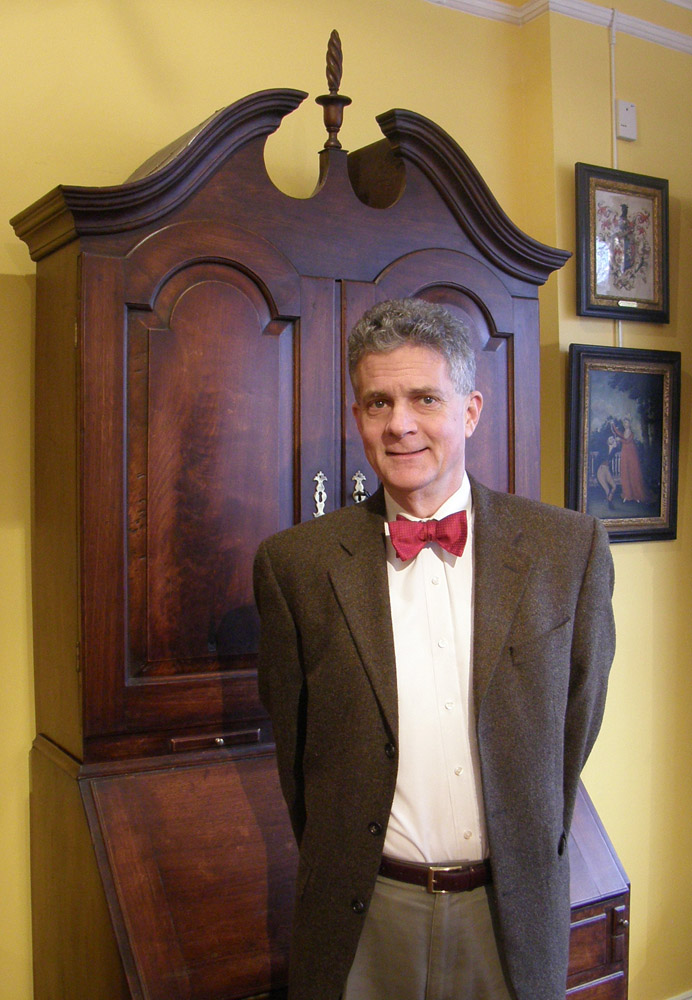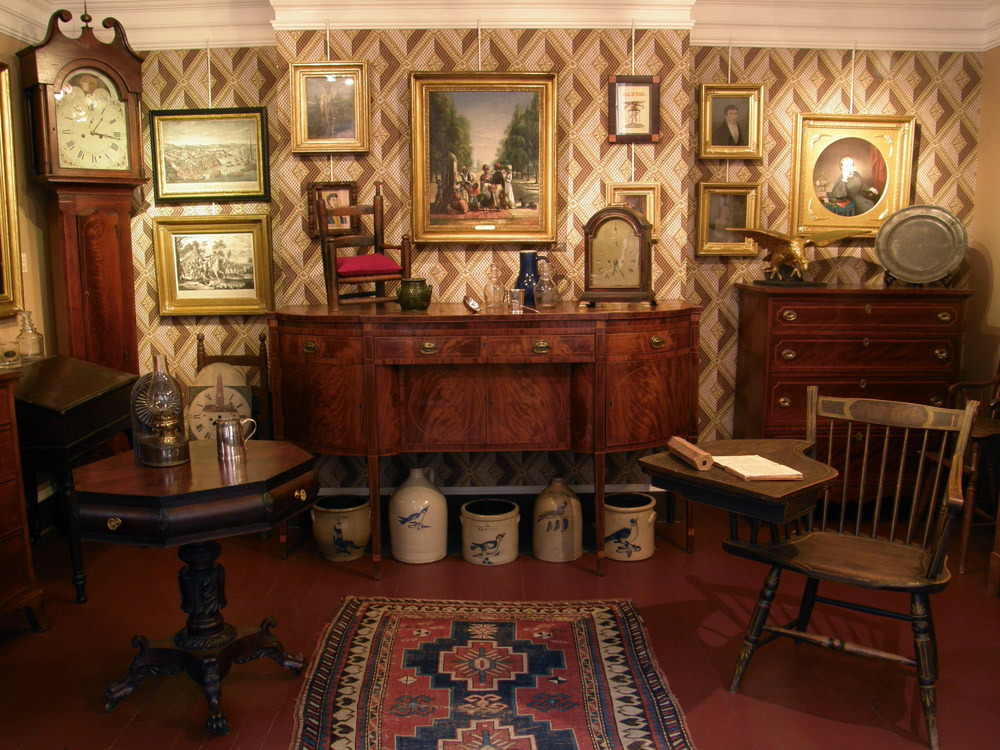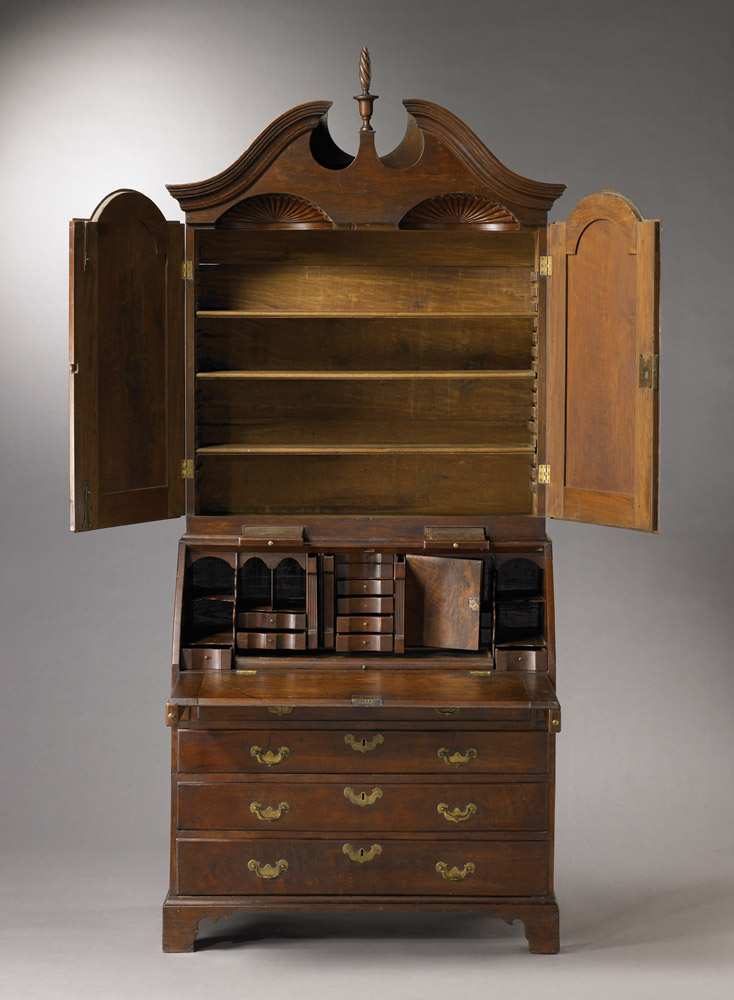
One morning in 1983 Sumpter Priddy III woke to Peggy Lee singing “Is That All There Is?” on the radio and knew she was singing to him. Although he had achieved his goal of becoming a curator at an important American museum, there had to be more. He resigned from the Colonial Williamsburg Foundation in Virginia, and “took a flying leap,” as he puts it, into a career as an antiques dealer.
The second of five children of a successful businessman and an English teacher, both with long Virginia pedigrees, Priddy grew up on a farm near Ashland, where, he says, “I fed a hundred head of cattle and did chores every day from the time I could walk until I left for college.” But an interest in antiques and history was instilled in him from childhood. “My parents and grandparents were inveterate auction-goers, and took me to country sales and antique shops from my youth,” he recalls, “and two of my older cousins and a neighbor were obsessed with Civil War battlefields and campsites, so we were always digging in refuse pits.”
When he was fourteen, a teacher told Priddy about Winterthur—Henry Francis du Pont’s grand house museum in Delaware—and he begged his parents to take him to see it. At that time you had to be sixteen to tour the house, so his sixteenth birthday present was the much-anticipated trip. “Even before that I knew I wanted to be a curator,” he recalls, but the visit clinched it. He began to educate himself in earnest about American furniture. “The honest truth is,” he says, “I learned the most from studying the pages of The Magazine Antiques—I would cover up the captions and quiz myself endlessly about what was in the pictures.”
As soon as he could drive, Priddy and his younger brothers were exploring on their own, sneaking into abandoned eighteenth- and early nineteenth-century houses standing derelict in the midst of cornfields near their farm. (“Once we found ourselves staring down the barrel of a twelve-gauge shotgun, face to face with an irate house owner who didn’t live quite so far away as we had thought!”) Peering through broken windows and climbing over rotted floorboards, they discovered dusty interiors filled with original woodwork-paneling and overmantels often with original paint, and occasionally composition ornament and carved details. One place in particular captivated the boys, an 1836 farmhouse that stood on family property in Surry County. Over a couple of high school and college summers, they re-glazed every window, hung shutters, repainted the exterior, and put on a new roof. “The original interior woodwork was marbled and grained in the wildest colors, and the parlor mantelpiece had three gilt sunbursts,” Priddy remembers.
By the time he had graduated from the University of Virginia and was a fellow in the Winterthur Program in Early American Culture in the mid-1970s, his recollection of those colors and sunbursts had begun to coalesce with colors and patterns he was seeing across late eighteenth- and early nineteenth-century American culture. Nearly three decades of research later, he published American Fancy: Exuberance in the Arts, 1790-1840 (2004), a landmark book and exhibition that reintroduced the cohesive aesthetic philosophy that had colored the entire range of middle-class American sensibilities in the period, but had all but disappeared into a jumble of misconceptions and misunderstandings.

After Winterthur, Priddy was offered the job at Colonial Williamsburg that he eventually found so frustrating. “The organizational structure pitted department against department in the quest for funding, so there was great political rivalry, and terribly bad blood,” he says. “More devastating, committees ran the museum, and most curators served on numerous committees, many of which met three hours every week, sometimes for months on end, to come to conclusions that any intelligent individual could have articulated in an hour. There was rarely support for research or money for travel. In my mind, a museum should be constantly advancing scholarship—the Museum of Early Southern Decorative Arts in Winston-Salem, North Carolina, where collecting takes a backseat to research and education, is a model to which others should aspire. At Williamsburg I was accomplishing a lot more on my weekends off than in a week at my desk.”
Happily, dabbling as an antiques dealer since his teens—including a couple of profitable painting sales soon after graduate school—gave Priddy the wherewithal to take his leap of faith. He set up a small shop in Richmond, but found that it was difficult to fly from there to the places he wanted to visit. He was constantly on the road, something that has only gotten worse; today, he says, he travels a good 180 days of the year. In 1993 he moved to Alexandria, Virginia, and in 2004 into the nineteenth-century classical town house there that has served as his gallery, office, library, and home ever since.
Although he finds exceptional pieces from elsewhere, southern furniture is his passion. “Original furniture almost never survived in those derelict houses we haunted in our youth,” he observes, “and, in fact, it seemed like almost no southern furniture existed any more. Only later did I discover how much of it had migrated westward or northward, largely in the twentieth century, when the South had few collectors and fewer museums who pursued it—and the North had both.”

He came to realize “that we knew comparatively little about the world that shaped our evolution as southerners.” And that realization sparked what became a consuming quest to illuminate the southern past, not only by reclaiming far-flung objects but by understanding the context in which they were created. In this Priddy is as much what he believes a curator should be as he is an antiques dealer. He photographs everything he sees, not just what he buys. His computer database records thousands of pieces of furniture, and twelve file cabinets are stuffed with photographs of thousands more. A formidable visual memory has enabled him to assemble from these some two hundred binders, each of which represents a different master artisan or school of cabinetwork.
All this has contributed to an understanding that in the largely agricultural early South, the most talented artisans often worked in comparative isolation. Yet southerners were also incredibly mobile and often moved westward, sometimes through three or four states in the course of a lifetime. Of course, as we now know, southern furniture traveled much farther than that in the aftermath of the Civil War and into the twentieth century.
Collectors and curators can be grateful to Peggy Lee for sending Sumpter Priddy to find it and its stories again.
